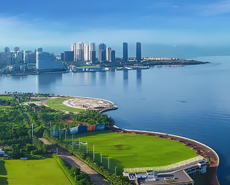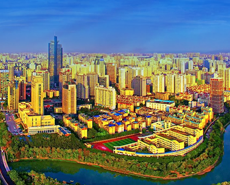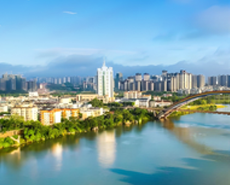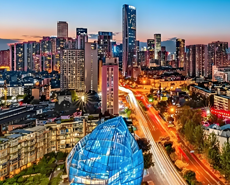
Ferrochrome market prospects still unclear
----Interview with Hao Zhongmin
General Manager
Inner Mongolia Alxa League Jinzhen smelting LLC
General Manager
Inner Mongolia Alxa League Jinzhen smelting LLC
Inner Mongolia Alxa League Jinzhen smelting LLC was built in 2005 with a total investment of RMB115 million (USD17.5 million), of which RMB65 million (USD9.9 million) is fixed assets and the rest of RMB50 million (USD7.6 million) is working capital. The company enjoys the advantage of convenient transportation as its plant is located in Alxa Economic Development Zone, that is the triangle region of Alxa League, Wuhai City and Shizuishan City of Ningxia. The company has an annual capacity of 50,000t of ferrochrome based on national standard BG/T5683-2008 and 26,000t of ferrosilicon in accordance with national standard GB/T2272-2009 with four submerged arc furnaces of 12,500KVA. It can produce various specifications of ferrochrome and ferrosilicon products. The company has 258 employees including 27 engineering and technical stuffs. In addition, the company invested nearly RMB1 million (USD0.2 million) to set up a lab equipped with advanced equipment, which ensures timely and accurate quality inspection on raw materials and finished products. The Company passed the "Ferroalloy Industry Access" (NDRC Announcement No.11, 2007) of the National Development and Reform Commission on February 27th, 2007; obtained the IS09001 Quality Management System Certification in 2006; and acquired the "Enterprise Environmental Protection Acceptance Certificate " and "Third-level Enterprise of Safe Production Standardization in Metallurgical and Trading Industry".
Asian Metal: Hello, Mr. Hao. Thank you for accepting Asian Metal's interview. First of all, could you please briefly introduce your company's ferrochrome business?
Mr. Hao: Located in Bayan Nur City, Inner Mongolia, our company was built in 2005 with a total investment of RMB115 million (USD17.5 million), of which RMB65 million (USD9.9 million) is fixed assets and the rest of RMB50 million (USD7.6 million) is working capital. We enjoy the advantage of convenient transportation as our plant is located in the triangle region of Alxa League, Wuhai City and Shizuishan City of Ningxia.
Our company has an annual capacity of 50,000t of ferrochrome based on national standard BG/T5683-2008 and 26,000t of ferrosilicon in accordance with national standard GB/T2272-2009 with four submerged arc furnaces of 12,500KVA. We can produce various specifications of ferrochrome and ferrosilicon products. We have 258 employees including 27 engineering and technical stuffs. In addition, our company invested nearly RMB1 million (USD0.2 million) to set up a lab equipped with advanced equipment, which ensures timely and accurate quality inspection on raw materials and finished products.
Asian Metal: Steel mills' purchasing prices for high carbon ferrochrome have kept declining in the fourth quarter of this year. And what do you think is the main reason?
Mr. Hao: Steel mills' purchasing prices for high carbon ferrochrome declined by RMB100/t (USD15.25/t), RMB500/t (USD76.27/t) and RMB800/t (USD122/t) MOM in October, November and December respectively. The declines in prices can mainly be attributed to the imbalance between supply and demand. The demand for ferrochrome slowed down as some stainless steel plants cut production or turned to produce common carbon steel with part of their capacity; however, the supply was adequate with the newly-added capacity released in Inner Mongolia in Q4.


Asian Metal: Part of stainless steel capacity was turned to produce common carbon steel in December, and how do you think that will impact on the ferrochrome market?
Mr. Hao: As far as we have learnt, most domestic stainless steel plants turned part of their capacity to produce common carbon steel in December, resulting in a decline in demand for ferrochrome, but the market supply was adequate, so steel mills' purchasing prices declined to RMB6,900-7,100/t (USD1,052-1,083/t) VAT included delivered D/P during the month, which squeezed the profits of producers in Inner Mongolia and also led to production suspensions of producers who might face losses in Guizhou and Sichuan provinces.
Asian Metal: How do you think of the impact that environmental inspections placed on the ferrochrome market?
Mr. Hao: Environmental protection is the theme of the ferrochrome industry this year. Several major producing provinces carried out environmental inspections one by one, which affected the market supply of ferrochrome. For example, environmental inspections in Sichuan in August led to the tight supply of low and extra-low carbon ferrochrome and accordingly sharp price increases; after the resumption of production in September, the price kept declining until early December. Nevertheless, environmental inspection policy might be implemented once again in the future and companies can only pass inspections if they could meet standards.

















